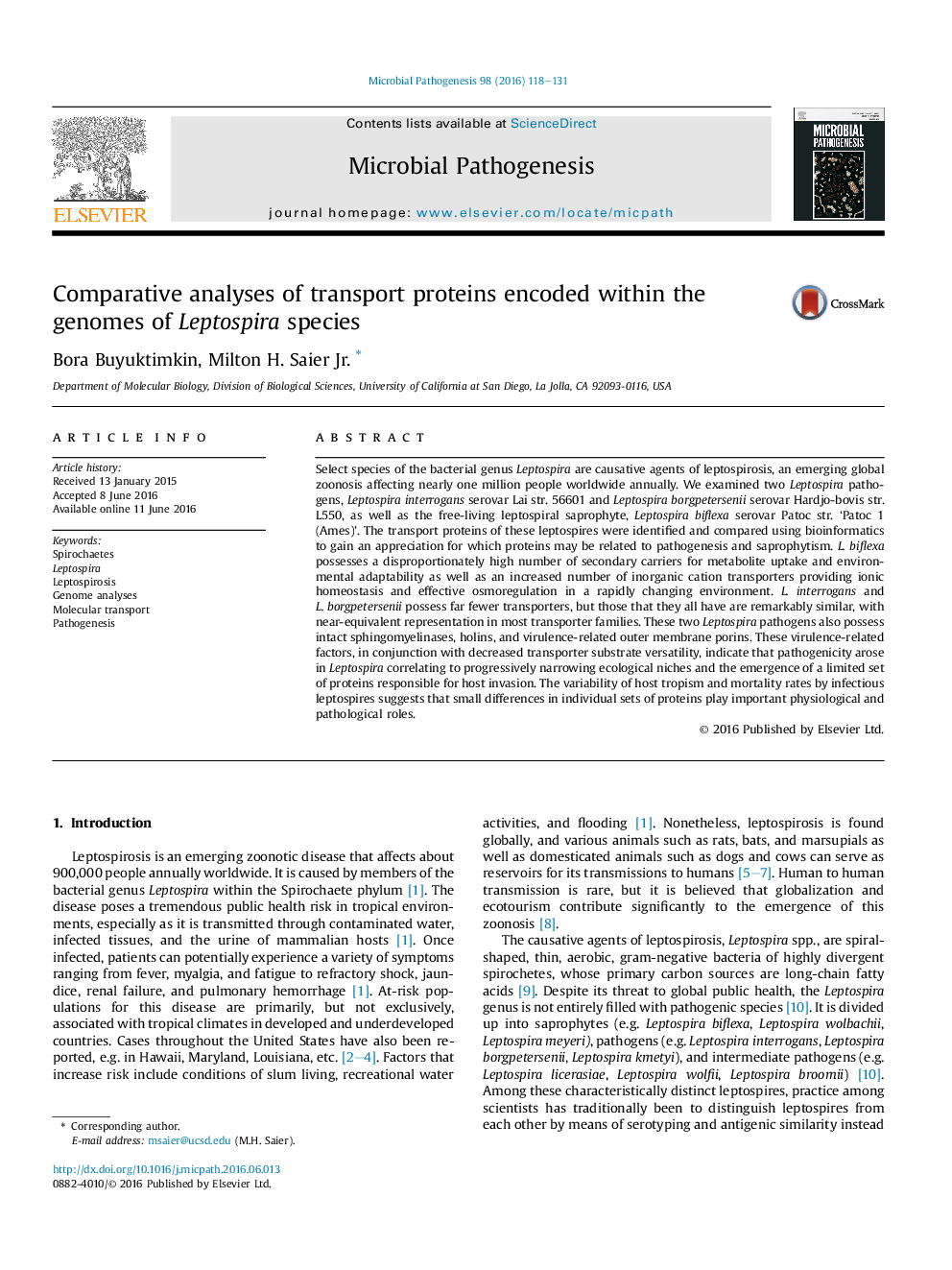| Article ID | Journal | Published Year | Pages | File Type |
|---|---|---|---|---|
| 3416394 | Microbial Pathogenesis | 2016 | 14 Pages |
Select species of the bacterial genus Leptospira are causative agents of leptospirosis, an emerging global zoonosis affecting nearly one million people worldwide annually. We examined two Leptospira pathogens, Leptospira interrogans serovar Lai str. 56601 and Leptospira borgpetersenii serovar Hardjo-bovis str. L550, as well as the free-living leptospiral saprophyte, Leptospira biflexa serovar Patoc str. ‘Patoc 1 (Ames)’. The transport proteins of these leptospires were identified and compared using bioinformatics to gain an appreciation for which proteins may be related to pathogenesis and saprophytism. L. biflexa possesses a disproportionately high number of secondary carriers for metabolite uptake and environmental adaptability as well as an increased number of inorganic cation transporters providing ionic homeostasis and effective osmoregulation in a rapidly changing environment. L. interrogans and L. borgpetersenii possess far fewer transporters, but those that they all have are remarkably similar, with near-equivalent representation in most transporter families. These two Leptospira pathogens also possess intact sphingomyelinases, holins, and virulence-related outer membrane porins. These virulence-related factors, in conjunction with decreased transporter substrate versatility, indicate that pathogenicity arose in Leptospira correlating to progressively narrowing ecological niches and the emergence of a limited set of proteins responsible for host invasion. The variability of host tropism and mortality rates by infectious leptospires suggests that small differences in individual sets of proteins play important physiological and pathological roles.
